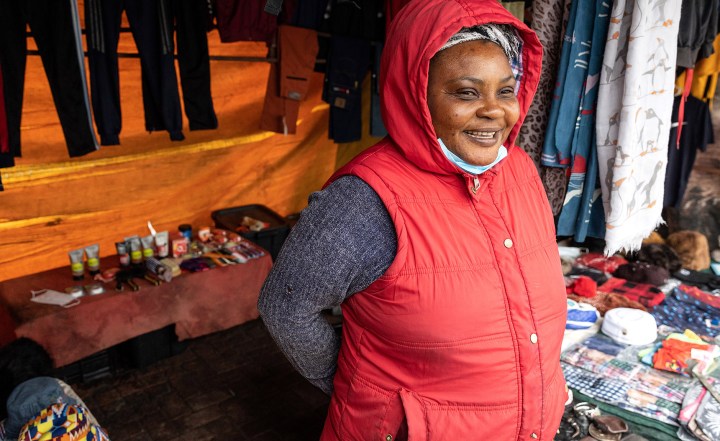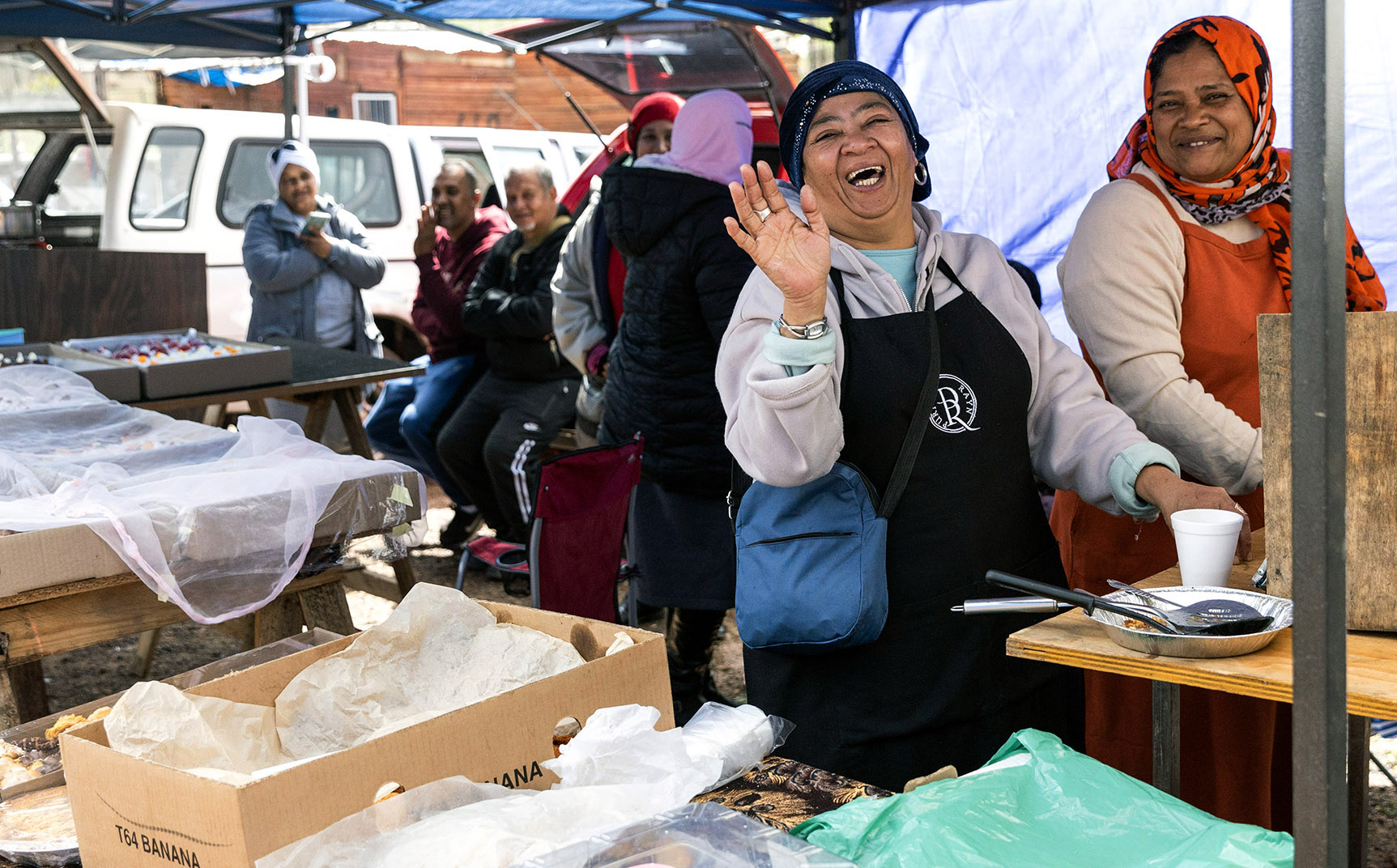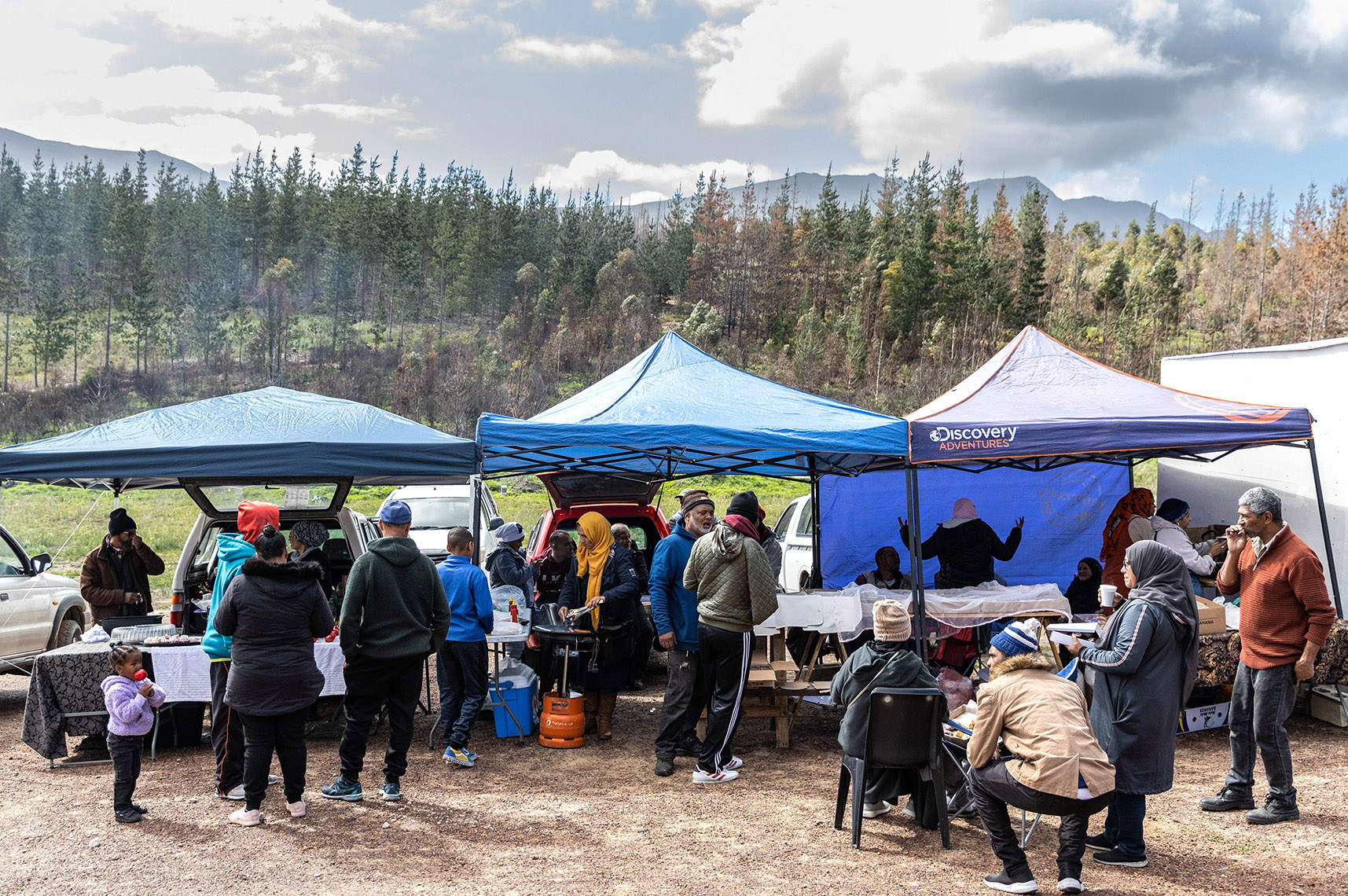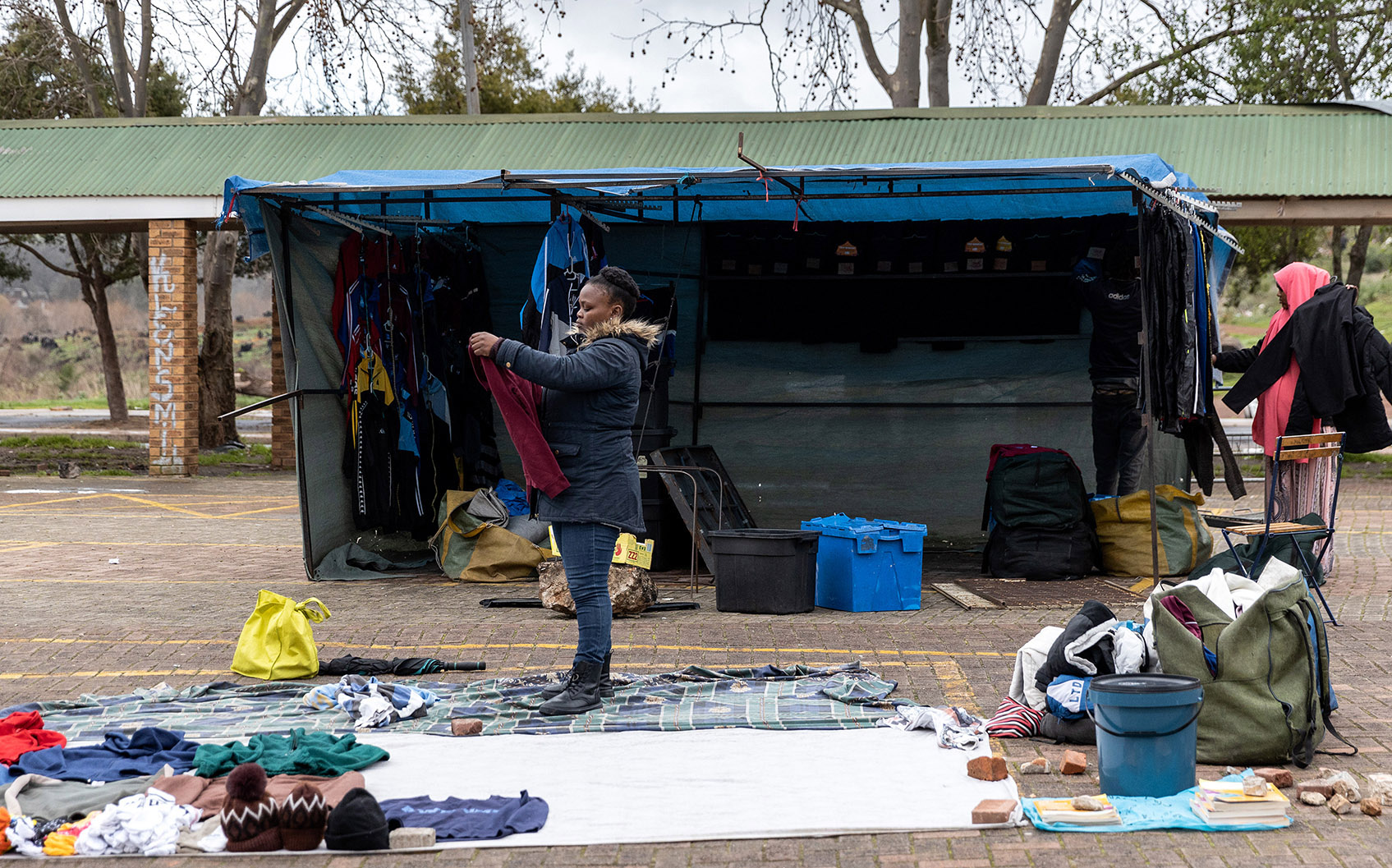MAVERICK CITIZEN OP-ED
Public markets can be the pulse and saviours of SA’s small towns

Markets bring people together, generate economic opportunities, and provide essential goods such as food and clothing. In small towns like Grabouw in the Western Cape, they can be a lifeline out of the Covid-19 pandemic and other crises.
Known as an agricultural hub for apples and pears, Grabouw boasts an ideally located central market that attracts scores of people from the surrounding farmlands, yet whose potential is unrealised. Located next to the town’s main transport hub, the market has been popular with informal traders for decades, particularly on Saturdays. The market’s potential is such that some vendors travel all the way from Cape Town to sell their goods, including fresh fruit and vegetables, clothes, and shoes.
Maryam, who lives in Bellville, has been trading in the market for the last 40 years, except during the Covid-19 lockdown when she wasn’t able to trade. In the stall next to Maryam, Florence, a Cameroonian who has been living in South Africa since 2007, explains that she starts setting up at 6am on Fridays and Saturdays. For both, their sales are dictated by farming seasons and when farm workers are paid, normally on a fortnight.
The market also lies next to a river which as Grabouw Development Agency (GDA)’s CEO Cornelis Van der Waal points out has potential as a tourist attraction. At the moment he says, it is not very appealing, partly due to the dissatisfying state of the market. With some basic improvements, it could become both a better place for existing market goers and tourists alike.
The clientele, the offering and the excellent location are there, what might be missing to make it an attractive market for all?
Improved basic infrastructure
The market’s location is prime, but the space in which Florence, Maryam and others trade is far from ideal. The trading structures, many with makeshift walls and flimsy corrugated iron roofing, lack maintenance as they point out, which dissuades people from using them for fear of the roof collapsing. Other challenges, typical of public spaces include punishing law enforcement, petty crime, and poor cleanliness, particularly of the public toilets.

Lynette works with the Grabouw Informal Business Association. Her dream for all vendors is “to have a solid place where they can trade with electricity, a roof, and storage”. (Photo: Ashraf Hendricks)
In contrast, the upmarket tourist-oriented Elgin Railway Market is located at the old Elgin railway station across town. Although it’s a private enterprise showcasing offerings for wealthier clientele Elgin Railway Market is also a place where people trade goods and come together. This market is an example of how decent infrastructure can enable trading. From reliable basic services to an attractive physical space, this may be easier for private actors to provide, yet still highlights that what works in market spaces has been well tried and tested in South African towns.
The Theewaterskloof municipality has dedicated resources to improving the central Grabouw market and organisations like the Grabouw Informal Business Association are actively involved in supporting vendors. The challenge is to use those limited resources in innovative ways to respond to needs on the ground.

Waldo Julies, the Elgin Railway Market’s manager and a Grabouw resident himself, says there are no points of comparison with central Grabouw market, but acknowledges they are taking strides to create more affordable trading spots for more local vendors. (Photo: Ashraf Hendricks)
Ownership, an intangible but essential input
Outside Grabouw, in Knoflokskraal, where a group of three thousand people have occupied government land to create a new community, a small Saturday flea market is buzzing. There is no fixed infrastructure beyond a clear piece of land with beautiful views and what each trader brings to set up their stall. What this make-shift market lacks in infrastructure however, it makes up in energy and pride, with a little bit of everything on offer, from bric-a-brac to home-made food, such as fresh Roosterbrood.

Sellers at the Knoflokskraal flea market rely on strong networks and personal relationships. (Photo: Ashraf Hendricks)
Ashley Wynand, the market organiser welcomes us with excitement and offers us warm snacks and drinks. He introduces us to his father Andy who’s involved in the land reclamation process.
What sets this little market apart is that a bigger cause has brought them together. Wynand says they are also planning other markets where people can showcase their products, come together but also, and more importantly, fundraise for the future of the community. It’s a complicated political situation related to contested land, nonetheless — and perhaps because of it — there is a sense of cohesion among everyone there.

The Knoflokskraal flea market has little infrastructure and lies on the outskirts of Grabouw but enjoys a beautiful backdrop and the support of people living on the farm. (Photo: Ashraf Hendricks)
The central Grabouw market could indeed benefit from a greater sense of ownership; it already has the history and network of people who have grown up alongside it; but better coordination and meaningful participation are essential. Ivan Gill, a trader who has been trading at the market for 30 years, says there was no consultation when upgrades were made: “We were simply told where new infrastructure would be placed and that we must accommodate to what was given to us.”
New offerings for a richer experience
There is no shortage of ideas. Besides general improvements, there is a desire to diversify the offering of the Grabouw market. Warreldia, Ivan’s daughter who is 38 years old and continues to work alongside her father says: “We need a coffee stand, a place that sells koeksisters as well as options for warm food. That would make it a more enticing market.”

In central Grabouw market, existing infrastructure needs repair so that vendors can feel safe to use it, rather than relying on their own tents which don’t protect them from the elements. (Photo: Ashraf Hendricks)
Similarly, the Elgin Railway Market shows how a market could connect with the rest of town. It not only offers an option for people, largely outsiders, to travel to the market by train, but it also offers the option to follow a wine route which connects to the market. With strategic investment and planning, Grabouw’s central market could connect to a nearby riverway with the type of infrastructure that enables walking and cycling and encourages visitors and market-goers to spend more time and explore the town.
Creating the ideal market is no simple feat. Nevertheless, the basics have been proven: good location and infrastructure, a sense of ownership and connection to other parts and offerings of the town can give market-goers more reason to return. The trick is to think of the market as an essential asset of the town, which serves more than a particular clientele but rather becomes a stage for the town to come alive. Resources must be well coordinated and a strong partnership between government and the private sector will be essential for all these elements to hold together.DM/MC
Marcela Guerrero Casas is co-founder of Local South and writes this story on behalf of the Western Cape Economic Development Partnership. This work was supported by Heinrich Böll Stiftung Southern Africa.




















 Become an Insider
Become an Insider
Comments - Please login in order to comment.